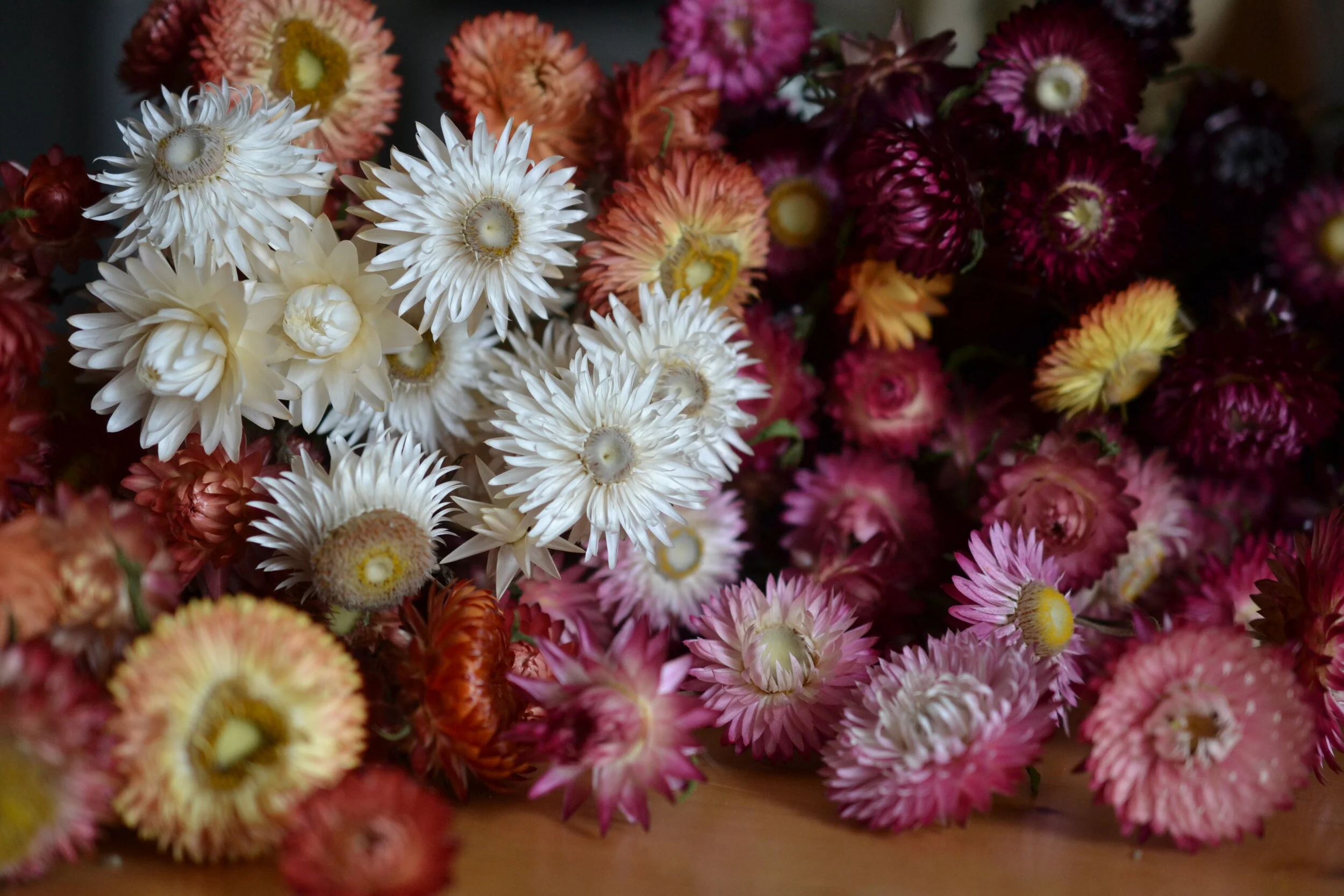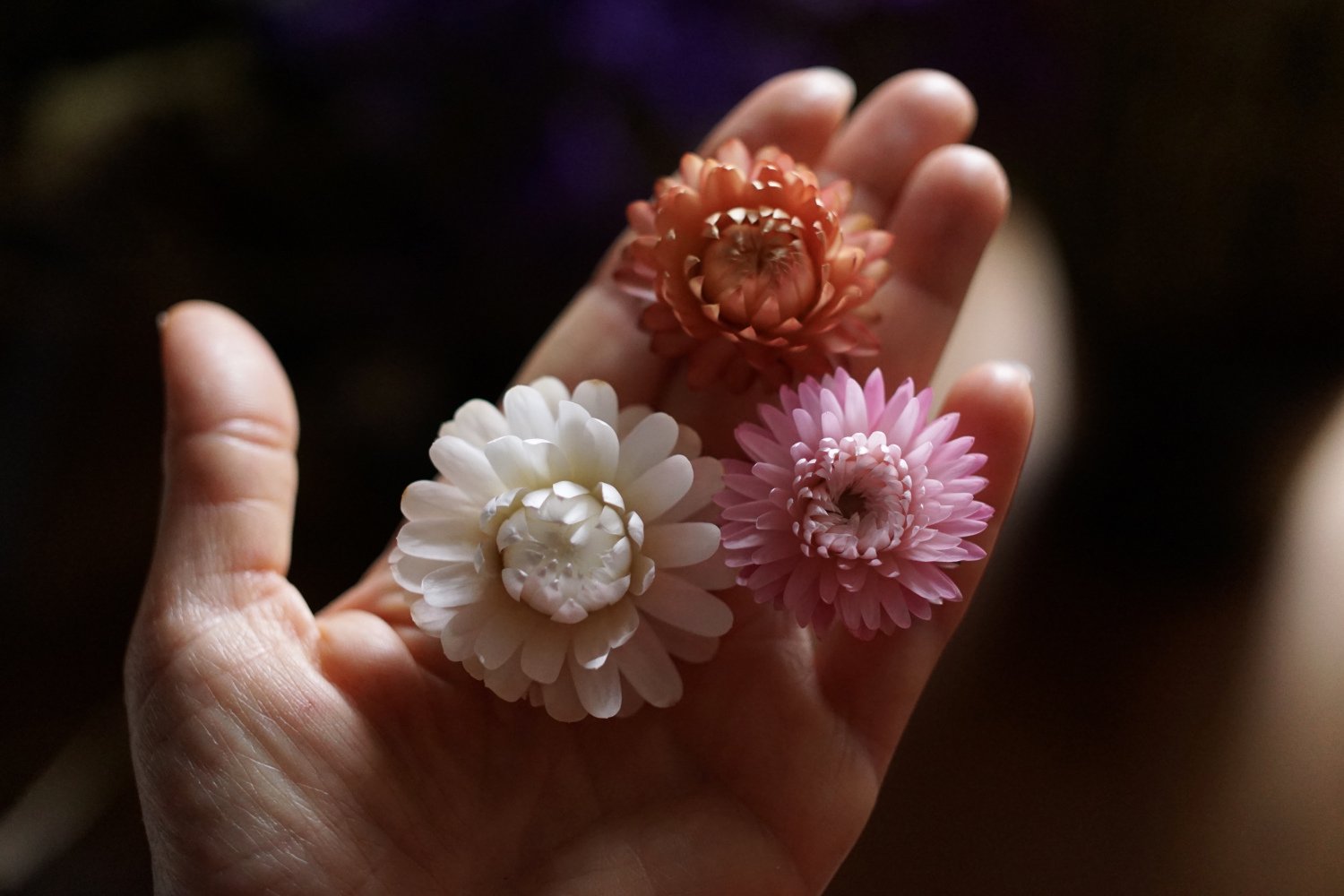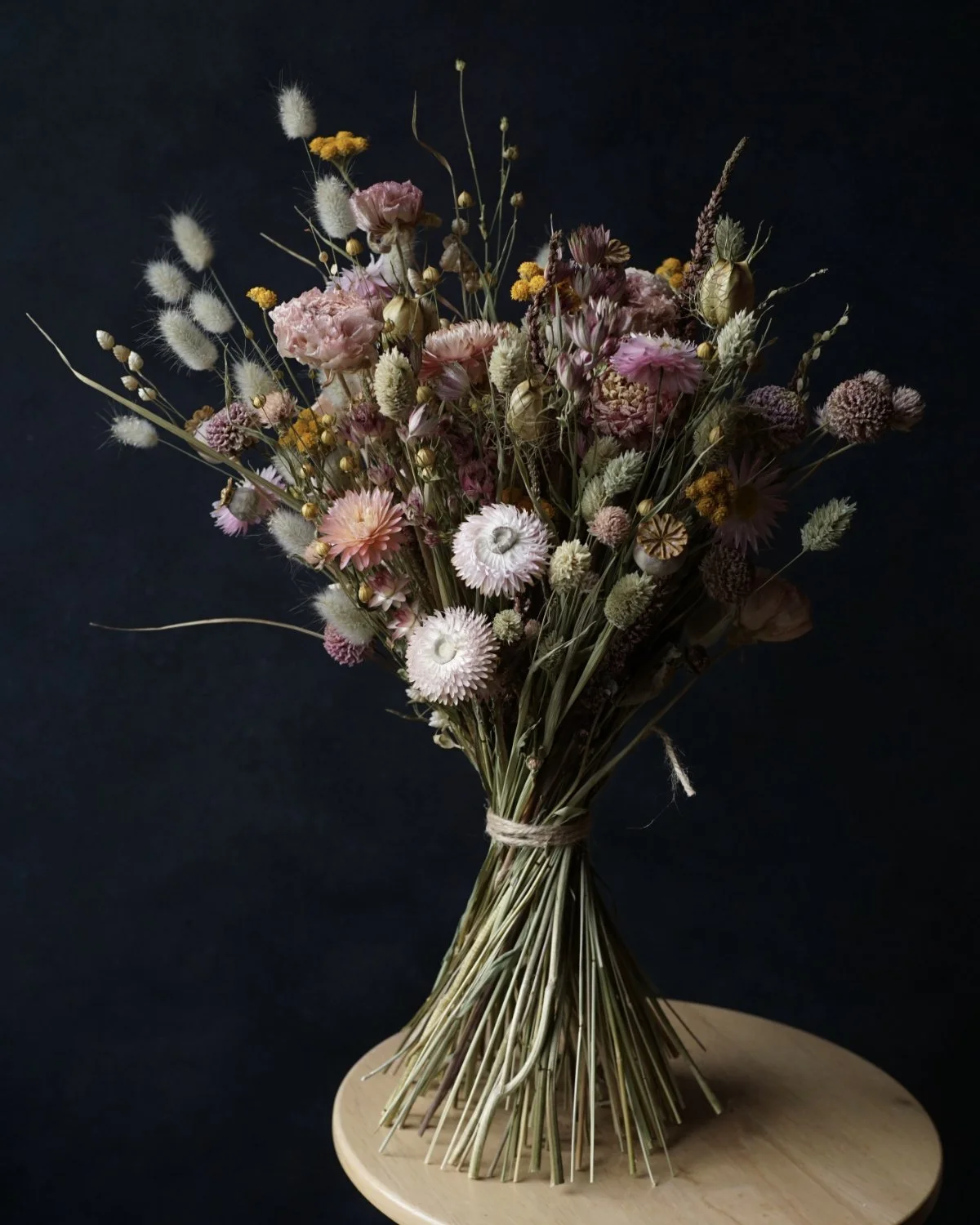How long do dried flowers last?
I’m often asked how long dried flowers last by people who are buying dried flowers for the first time. It’s a great question! I usually answer with ‘it depends’ and give a range of times as it truly does depend on varying aspects of flower type and environmental conditions.
Dried flowers last a long time - much longer than fresh flowers which last anything from a few days up to a few weeks - but they don’t last forever, despite often being called everlasting flowers. ‘Everlasting’ is a term that’s sometimes specifically applied to the types of dried flowers that are naturally papery such as strawflowers and statice - the dried flowers that usually last the longest. But just like fresh flowers, dried flowers - including the ‘everlasting’ ones - will eventually need to be replaced.
The lifespan of flowers after they’ve been dried depends on two main factors which are
The type of flower
The environmental conditions where the flowers are stored or displayed
Before I talk about these in more detail, let’s first let’s discuss how you know when a flower has come to the end of its ‘dried’ life. The colours of dried flowers naturally fade slowly over time, from the moment they’re fully dried. Often the colours they change to are just as gorgeous as their original colours, just more subtle. But if you look at your dried flowers and think the once-bright tones have faded to shades you no longer enjoy, or they start to fall apart when handled or cleaned, it’s probably time to compost them and replace them with new flowers. Now let’s take a look at the main factors influencing the life span of dried flowers.
Types of dried flowers and longevity
Some flowers naturally retain their colour longer than others. Under ideal conditions (discussed below) papery flowers - like strawflowers (Helichrysum), statice (Limonium) and paper daisies (Helipterum) - tend to remain vibrant for longer (very bright for 1-2 years) and even after that their colours are still pretty strong for another year or more. Non-papery flowers that are not so fleshy when fresh - such as cornflowers, lavender, gomphrena, yarrow, globe thistles and hydrangea - can usually retain good colours for at least 1-2 years though their colours do start to fade faster than the papery everlastings. I’ve found that flowers that are fleshier when fresh - such as ranunculus and dahlias - can start to fade within 9-12 months though some are much slower to fade while others fade faster. Some of this depends on the type of pigments that colour the petals and how long they’re able to last after the flower is dried. Other materials that are green when cut - such as grasses, seed pods and various leafy foliages - also fade to a neutral ivory or buff color over time (after about 1-2 years).
How environmental conditions affect dried flower longevity
The floral lifespans discussed above all depend on how the flowers are displayed or stored. Even the naturally longest-lasting flowers will fade faster if they’re exposed to unfavourable conditions.
For dried flower designs that are going to be on display, a position out of direct sunlight is best as direct sunlight will fade dried flowers very quickly. Even indirect sunlight will contribute to slightly faster fading. Flowers that are regularly exposed to high humidity may eventually droop or even go mouldy if conditions are very damp and cool and there is little air circulation. Battering by wind (if they’re outside or close to an open window) can contribute to breakage or dropped petals. Keeping dried flowers near a heat source like a fireplace or radiator will accelerate how fast they become brittle and make them more susceptible to breakage.
If you have dried flowers that you’re going to use for future crafting, these are best stored in a dry, dark place such as in a cardboard box in a room with low humidity. You can also hang your dried flowers in a dark, dry room (this is how I store my flowers). Stored either of these ways, away from sunlight and moisture, flowers and grasses will keep their colours for longer than dried materials that have been exposed to light on a daily basis and will still look lovely when you’re ready to use them.
Handling dried flowers as little as possible will also help to prevent damage to delicate parts, so only clean them once or twice a year if they’re not too dusty (see my blog post about dried flower care and advice on cleaning). Place designs like wreaths and bouquets in places where they won’t get bumped by passers-by. It’s also best to avoid rearranging your dried designs regularly if at all.
I hope this helps to answer the question of ‘how long to dried flowers last’ and you can see why I usually tell people that ‘it depends’. Just like fresh flowers, they eventually need to be replaced with something new. Enjoy them for the time that they last and appreciate them as the colours change and fade. And when you decide it’s time to buy new dried flowers, you’ll be supporting the flower growers, florists and artists who grow them and create beautiful arrangements.
Ready to buy some dried flowers? You can visit my shop here!














